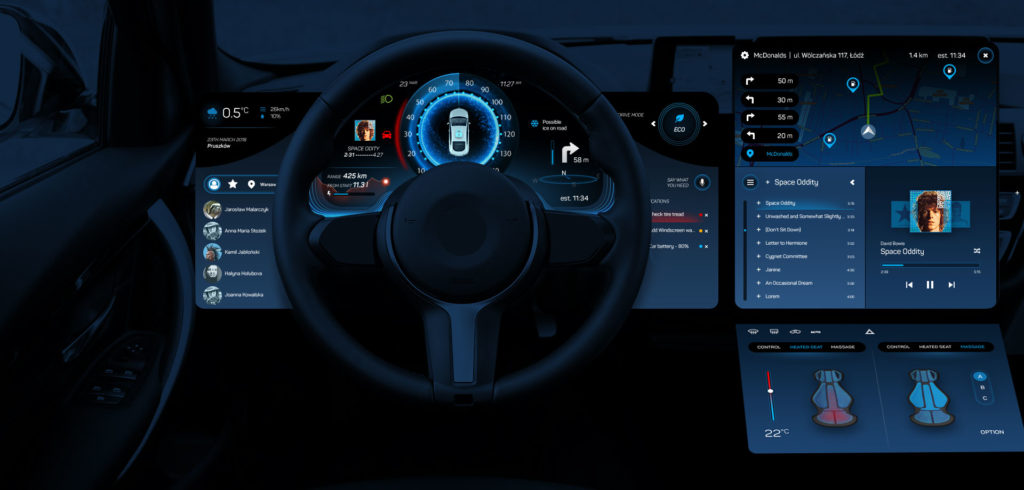Mobica’s head of software business development, Wolfram Ries, predicts how the roll-out of autonomous vehicles will happen
Global software company Mobica is working with leading OEMs, as well as Tier 1 and Tier 2 suppliers, in the automotive industry to develop technology that will power the next generation of vehicles. The goal is to deliver complete autonomy, but how close is the industry to Level 5 and what are the challenges facing manufacturers and suppliers?
Mobica recently appointed Wolfram Ries as head of software business development and he has been tasked with developing Mobica’s automotive software services portfolio, in particular infotainment systems, navigation, and connectivity. “One of the main issues facing the industry today is trust. We are seeing vehicles with Level 3 autonomy already – Level 4 is another magnitude of complexity – but we still haven’t convinced the public that the technology is safe. Before we can sell these cars, people must accept them as being safer than when a human is at the wheel, and that takes time.”
Ries often travels on the A9 autobahn near Munich, which is currently being converted into a smart highway. “I think we’ll see small fleets of commercial vehicles first because the infrastructure isn’t in place for a wider roll-out of self-driving vehicles,” Ries comments. “In the countryside, for example, it’ll take much longer because connectivity is still quite poor in some areas, and the challenges facing autonomous vehicles are different from the structured road layouts in our cities. Here, pedestrians are usually kept in check by infrastructure that vehicles can communicate with, but there are no such controls in rural areas.”
Ries therefore believes that the only way to deliver nationwide networks is if OEMs, software developers, and governments work together. “We are entering that transition phase now, and it’s developing in parallel with advances in electric vehicles and fuel-cell technology, which should become a viable alternative to EVs and gas engines within five years. As we demand more in terms of mobility, we could even see flying taxis in places like Tokyo, Singapore, and the Middle East.”
 To avoid collisions, all these vehicles will need to be connected. At the moment, the USA, parts of Europe and Japan use dedicated short-range communication (DSRC) technology so that vehicles can communicate with one another and infrastructure as part of an intelligent transportation system. DSRC has low latency, high reliability, is secure, and it copes well even in poor weather.
To avoid collisions, all these vehicles will need to be connected. At the moment, the USA, parts of Europe and Japan use dedicated short-range communication (DSRC) technology so that vehicles can communicate with one another and infrastructure as part of an intelligent transportation system. DSRC has low latency, high reliability, is secure, and it copes well even in poor weather.
However, it requires units in vehicles and on the roadside to communicate with one another, and it is only effective to a range of about half a mile. China is emerging as a global player in the self-driving sphere, but the focus there is on C-V2X (cellular vehicle-to-everything) technology, and most of Europe has agreed recently to adopt this system instead. This could lead to a technology ‘arms race’, and indeed some manufacturers in the USA are already switching to C-V2X because they feel DSRC, which is essentially an advanced wi-fi signal, will be rendered obsolete by the 5G network that handles C-V2X.
This tech race has even filtered down to the likes of Google and Apple as they compete for the infotainment rights in new vehicles. With this increased connectivity comes risk, however.
“All new connected vehicles will have to conform with government legislation. Laws will have to be standardized across continents and the data gathered by these vehicles must be safely collected, stored, and shared for the benefit of the industry as a whole.,” Ries explains.
 However, this process is only just beginning and the cybersecurity landscape is constantly evolving. With enormous government investment, China will soon become one of the market leaders in both automotive and technology terms. The big German manufacturers like BMW, Audi, and VW – and indeed all the major brands in Europe and North America – will have to spend heavily to remain competitive. There will, of course, be winners and losers in terms of unit sales, and which companies win the rights to supply the technologies to the manufacturers.”
However, this process is only just beginning and the cybersecurity landscape is constantly evolving. With enormous government investment, China will soon become one of the market leaders in both automotive and technology terms. The big German manufacturers like BMW, Audi, and VW – and indeed all the major brands in Europe and North America – will have to spend heavily to remain competitive. There will, of course, be winners and losers in terms of unit sales, and which companies win the rights to supply the technologies to the manufacturers.”
VW has made huge strides with the beginning of mass production of the ID.3, a revolutionary electric vehicle that incorporates corrective power steering, pedestrian warnings, augmented-reality head-up display, and adaptive cruise control to deliver an extra layer of safety.
“We’re still some way short of Level 4 autonomy though and, due to Level 5 being yet another order of complexity, I don’t think we’ll see these vehicles on our roads for another 10 to 12 years,” Ries concludes.


